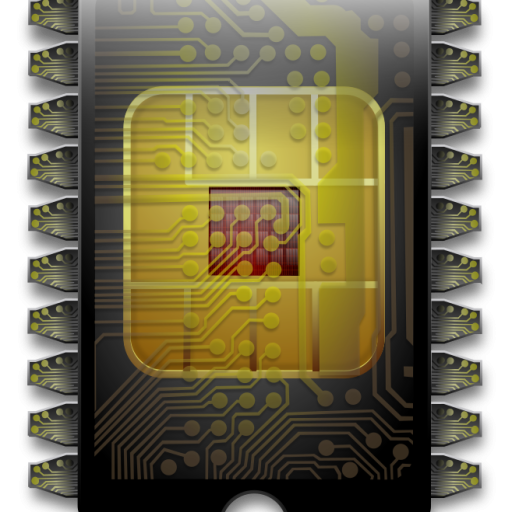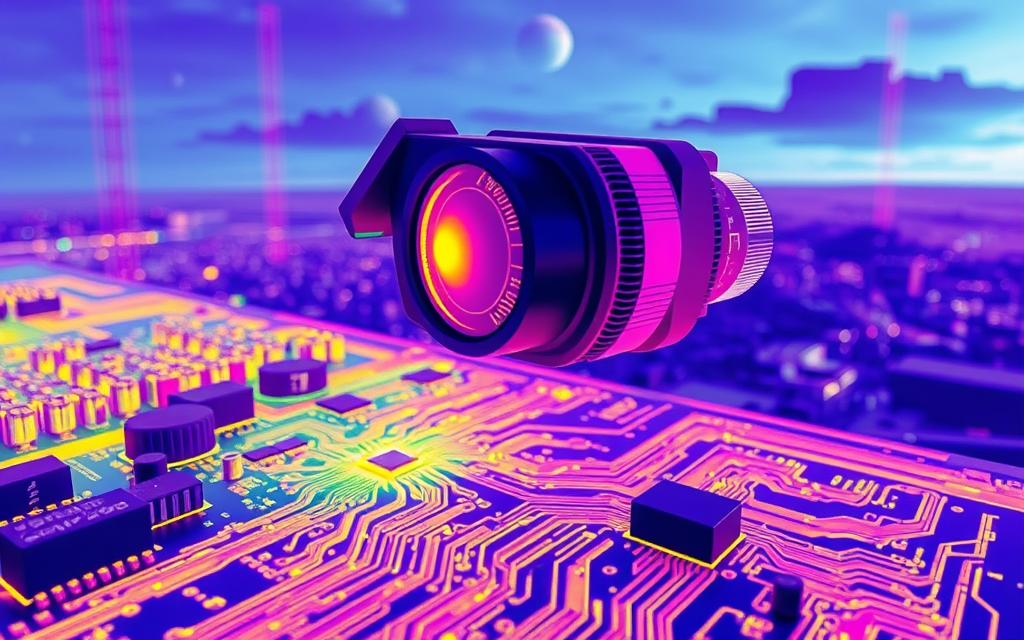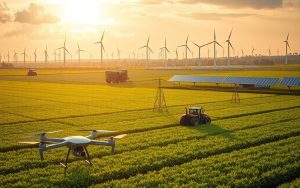Infrared sensing technology uses invisible thermal radiation to work. It was first used by NASA. This method turns temperature changes into pictures or digital data.
It’s different from other tools because it doesn’t need to touch things. This makes it very useful for firefighting and checking industrial equipment.
Thermal data collection uses special sensors. These sensors look at wavelengths between 700 nm and 1 mm. They can spot tiny temperature changes, as small as 0.01°C.
This helps find energy leaks in buildings and check electrical systems. It even helps track animals in the dark.
Today’s heat detection systems use advanced software. This software turns thermal data into maps or numbers. It helps make quick decisions in health, environment, and security fields.
This technology is great for American projects. It checks solar panels and aerospace parts without damage. It helps avoid problems before they start. This shows how thermal imaging is key in data-driven fields.
The Science Behind Infrared Radiation
Infrared technology started with Sir William Herschel’s 1800 experiment. He found invisible rays beyond red light using thermometers. This changed how we detect energy. We’ll look at infrared’s place in the electromagnetic spectrum and how it works in the real world.
Understanding the Electromagnetic Spectrum
The electromagnetic spectrum sorts energy waves by frequency and wavelength. Infrared is in a key spot:
Position Between Visible Light and Microwaves
Infrared has wavelengths from 700 nanometres to 1 millimetre. It’s right next to visible light. NASA divides it into three parts:
- Near-infrared (700nm-1.4μm)
- Mid-infrared (1.4μm-3μm)
- Far-infrared (3μm-1mm)
Wavelength Ranges (700nm-1mm)
Infrared acts differently than visible light. Human eyes see 400-700nm wavelengths. But, infrared sensors look at longer, lower-energy waves that are heat.
Principles of Thermal Emission
Every object gives off infrared radiation based on its temperature. This was first figured out through black body radiation.
Black Body Radiation Fundamentals
A perfect black body takes in all radiation. Industrial thermal cameras use this to find surface temperatures in making things. For example:
“Steel mills use infrared pyrometers to check molten metal temperatures over 1,500°C without touching it.”
Stefan-Boltzmann Law Applications
This law says radiant energy goes up with the fourth power of absolute temperature (σT⁴). Today, building inspectors use it to:
- Find heat leaks in insulation
- Spot overloaded electrical circuits
- See moisture in walls
Infrared vs Visible Light Detection
Infrared and visible light capture electromagnetic waves but in different ways.
| Characteristic | Infrared | Visible Light |
|---|---|---|
| Energy per photon | 0.001-1.7 eV | 1.7-3.3 eV |
| Atmospheric penetration | Affected by H₂O/CO₂ | Limited by particles |
| Night operation | Effective | Needs light |
Energy Level Differences
Infrared photons have less energy than visible light. This means special materials like indium antimonide are needed for detection. This is why night vision systems use active cooling to cut down on noise.
Atmospheric Absorption Characteristics
Water vapour and carbon dioxide absorb certain infrared wavelengths. This is a problem for weather satellites. NASA’s AIRS instrument looks at 2,378 spectral channels to get past this.
These scientific ideas let infrared do special things. It helps find energy losses in buildings and track volcanic activity through clouds. Modern uses come from Herschel’s discovery that invisible radiation carries heat.
How Does Infrared Technology Work: Sensing Mechanisms
Modern infrared systems turn thermal patterns into precise measurements through technical processes. This section looks at three key parts that make this conversion possible, from detection to data output.
Core Detector Technologies
Infrared devices use two main sensor types, each with its own benefits:
Thermal detectors (microbolometers)
Microbolometer technology is widely used in thermal imaging because it doesn’t need cooling. These sensors measure resistance changes from infrared radiation. Fluke’s IR-Fusion® systems can reach ±2°C accuracy in building checks.
Photon detectors (InGaAs sensors)
Indium gallium arsenide sensors are great for spectroscopic tasks, detecting wavelengths between 900-1700 nm. They need cooling but respond faster than microbolometers for scientific work.
| Feature | Microbolometers | InGaAs Sensors |
|---|---|---|
| Detection Method | Thermal absorption | Photon interaction |
| Cooling Needs | None | Liquid nitrogen |
| Response Time | 8-12 ms | <1 μs |
| Common Use | Building inspections | Laser alignment |
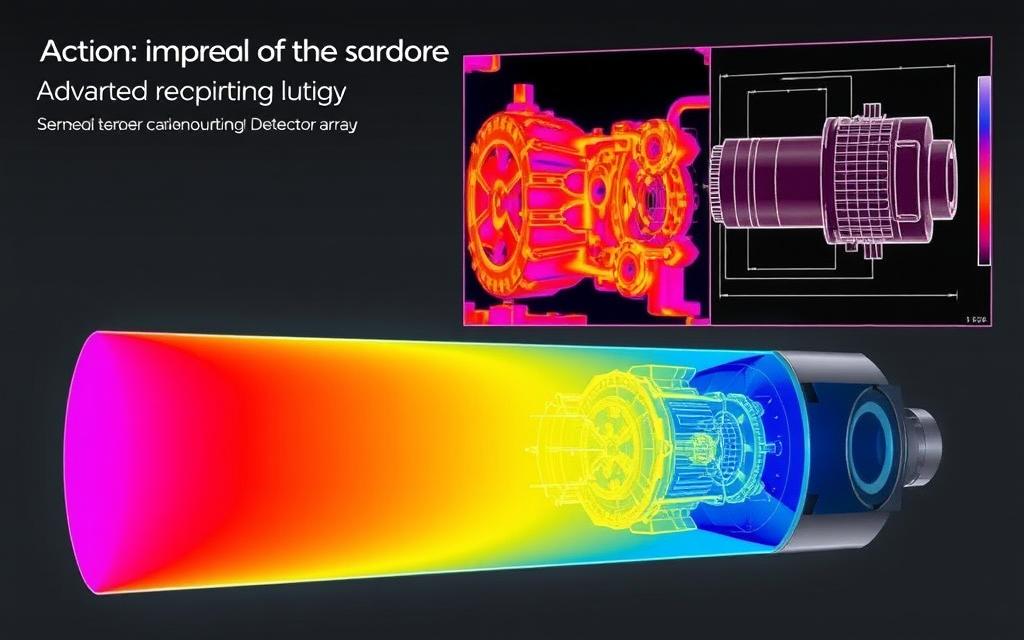
From Radiation to Visualisation
Thermal imagers go through four stages to make infrared data easy to understand:
Heat signature conversion to electrical signals
Detector elements create small voltage changes based on the radiation they receive. Advanced systems boost these signals 1000x while keeping 14-bit resolution for detailed thermal profiles.
Colour mapping techniques
Palette algorithms colour temperature ranges, with iron-red and rainbow scales common. Industrial systems often use isotherm highlighting to show areas beyond certain thresholds.
“Modern colour mapping does more than create pretty pictures – it encodes temperature differentials the human eye can process in 200 milliseconds.”
Ensuring Measurement Accuracy
Data acquisition systems fight environmental issues through:
Signal processing components
16-channel ADCs with digital noise reduction keep signal quality, even in noisy factories. Automatic gain control adjusts for changing ambient temperatures.
Temperature calibration methods
Field calibration routines use blackbody references to correct for sensor drift. As shown in recent thermal imaging studies, proper thermal calibration reduces errors by 37% in clinical use.
Modern systems use NIST-traceable calibration certificates. Industrial models go through 72-hour burn-in tests before use. This ensures ±1% reading consistency from -15°C to 50°C.
Practical Applications Across Industries
Infrared technology has moved from theory to practical use. It helps track wildfires and find health issues. This section looks at three areas where thermal imaging makes a big difference.
Building Diagnostics
Now, infrared scans check buildings for hidden problems. Thermal cameras spot tiny temperature changes. This helps find issues before they get worse.
Thermographic Surveys for Energy Efficiency
Contractors use special devices to find where heat escapes. Colour-coded reports show where to fix it. This can cut energy costs by up to 30%.
Moisture Detection in Construction
Water damage often hides until it’s too late. Infrared scans show where water is. This lets builders fix problems without tearing things apart.
Medical Imaging Advancements
Infrared is used in medicine for non-invasive checks. It’s safer than X-rays and shows how the body works.
Breast Thermography Techniques
Special cameras make heat maps of breasts. Hot spots can mean cancer, helping find it early.
Peripheral Vascular Disease Monitoring
Doctors check blood flow with infrared. A big difference in skin temperature can mean a blockage.
Industrial Process Control
Factories use thermal sensors to keep things running smoothly. Predictive maintenance systems look at heat to plan repairs.
Predictive Maintenance Systems
Thermal patterns show when equipment is too hot. This helps avoid breakdowns.
Quality Assurance in Manufacturing
Infrared checks product temperatures. If it’s off, the product is rejected.
| Industry | Application | Key Benefit |
|---|---|---|
| Construction | Moisture Mapping | Prevents structural decay |
| Healthcare | Vascular Screening | Non-invasive diagnostics |
| Manufacturing | Equipment Monitoring | Reduces downtime costs |
Infrared technology solves problems in many fields. As it gets better and cheaper, more places use it.
Technical Limitations and Challenges
Infrared technology has many benefits, but engineers face big challenges. These include environmental interference and hardware limits. They need to design systems carefully to overcome these issues in real-world use.
Environmental Interference Factors
Atmospheric conditions greatly affect infrared technology. Water vapour and carbon dioxide absorb certain IR wavelengths. NASA’s studies show a 40% signal loss in Martian dust storms, showing how dust affects infrared readings.
Surface Emissivity Variations
Different materials give unpredictable readings. Polished metals emit very little thermal radiation compared to matte surfaces. This can lead to errors of over 15°C in industrial settings. Modern systems use dual-wavelength sensors to correct this, but it makes things more complex.
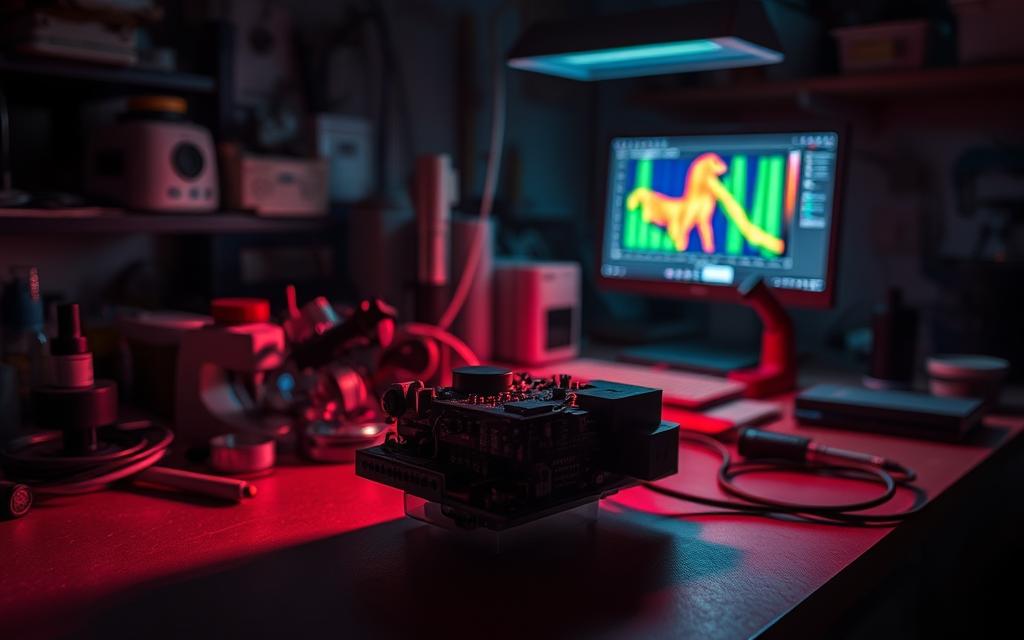
Resolution and Sensitivity Trade-offs
Detector arrays have physical limits that affect image quality. Current microbolometer technology usually tops out at 640×512 pixels. But cooled quantum detectors can reach 1280×1024 resolutions, but at a much higher cost.
Thermal Drift Compensation Needs
Uncooled sensors lose accuracy with temperature changes. Automotive night vision systems need to be recalibrated every 15 minutes. This is shown in BMW’s 2023 thermal camera specs. Keeping temperatures stable adds 30% to costs.
Comparative Analysis With Other Technologies
Infrared systems compete with ultrasonic and LiDAR in different areas. Tesla’s Autopilot 4.0 uses all three, but infrared vs LiDAR comparison shows key differences:
| Feature | Infrared | Ultrasonic | LiDAR |
|---|---|---|---|
| Effective Range | 150m | 5m | 250m |
| Rain Performance | -20% accuracy | Unaffected | -45% accuracy |
| Object Recognition | Thermal signatures | Distance only | 3D mapping |
| Cost per Unit | £120 | £8 | £750 |
LiDAR Integration Challenges
Combining IR and LiDAR in cars causes wavelength interference. Ford’s latest models show 12% data conflict rates. Solutions to this add 1.2ms latency, which is critical for detecting obstacles at high speeds.
Conclusion
Infrared technology is changing how we observe the world in many fields. The James Webb Space Telescope shows this with its advanced infrared tools. It can see things that optical telescopes can’t, like the atmospheres of planets and how galaxies form.
Thermal imaging is also set to make a big impact in industries. It’s used in factories to spot problems before they happen. Energy companies use it to find gas leaks and check pipelines, making things safer.
In medicine, infrared imaging helps without needing to cut into the body. It shows where blood is flowing and where there’s inflammation. In construction, it finds where buildings might be losing heat or getting wet.
Researchers are working to improve infrared technology. They want to get better images and deal with interference. With the help of computers, finding faults becomes more accurate.
Companies that use infrared technology get valuable information. They can see how heat affects their work, from making semiconductors to spotting wildfires. The discoveries made by NASA’s JWST are leading to new uses for infrared technology. This means more chances for people to make better decisions based on data.
